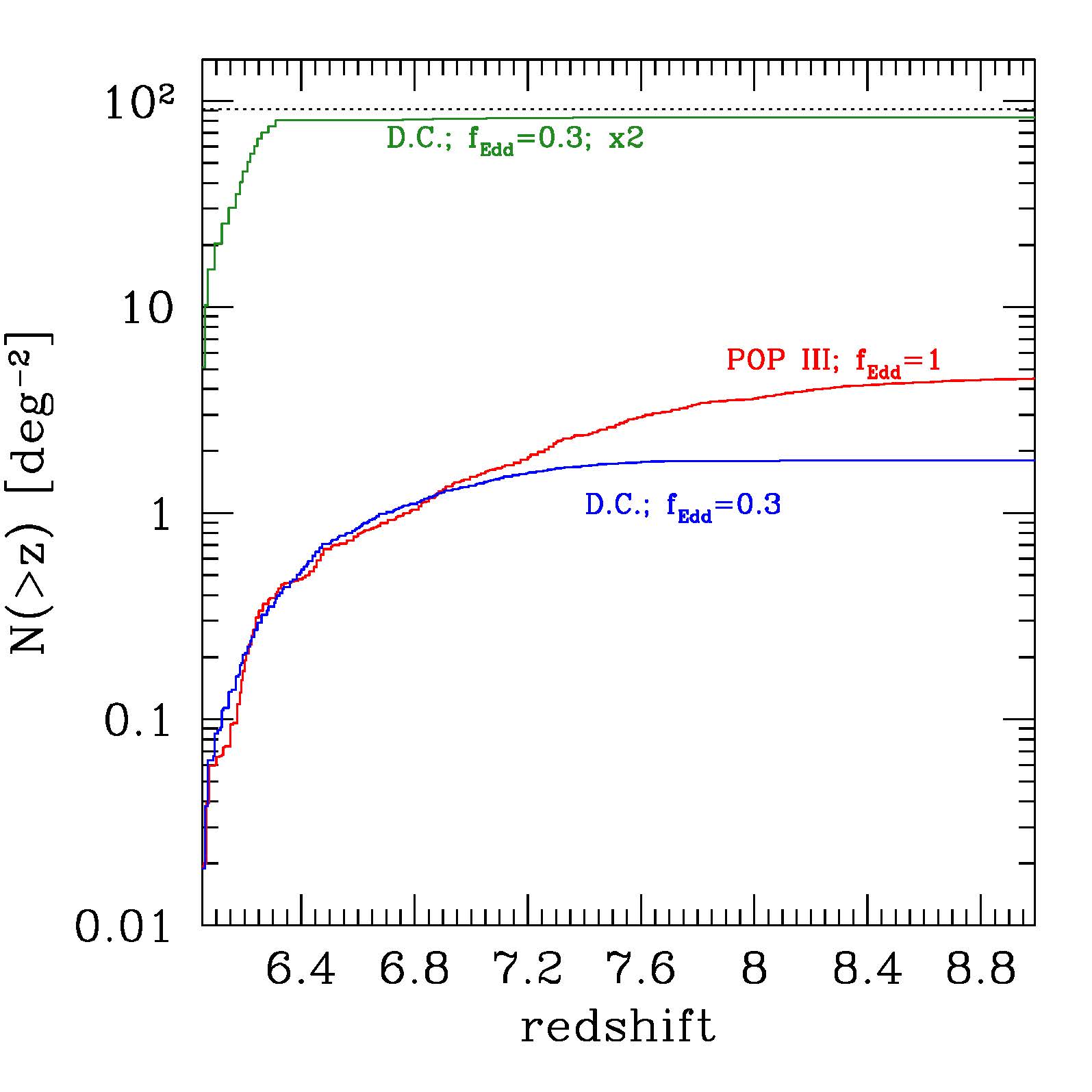We investigate the formation and evolution of black holes via cosmological realizations of the merger hierarchy of dark matter halos from early times to the present in a LCDM cosmology. In this work, two black hole seed formation models are considered : those deriving from population-III star remnants (Pop III), and from direct collapse models (D.C.). The main difference between these two models lies in the mass function of seeds. Pop III seeds are light weight (few hundred solar masses) and form abundantly and early (roughly one per comoving cubic Mpc at z~20). D.C. seeds are more massive (up to a million solar masses), but rarer (a peak density of 0.1 per comoving cubic Mpc at z~12). Black holes grow by a combination of accretion and mergers, with the latter as the dominant channel. Below we provide tables with expected properties of the high redshift black holes.

| File Name | Description |
| counts_deg.tar | Counts per square degree for the four models described in the text, at two flux limits: 5e-17 erg/cm^2/s (flux_5e17_*) and 1e-17 cgs (flux_17_*). We adopted a k-correction of 25 for the restframe X-ray band. No correction for absorption or obscuration was included. |
| ModelDescription.pdf | Details on the implementation |